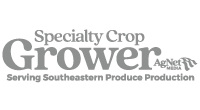
The U.S. Department of Agriculture Foreign Agricultural Service (USDA FAS) forecasts Argentine lemon production to decline to 1.38 million metric tons (MMT) in 2024–25. The prior year’s production was 1.45 MMT.
The decline is primarily due to early and persistent rainfall during the blooming season, which is expected to negatively affect fruit quality. Additionally, many producers are shifting their focus to more profitable crops, such as sugarcane.
AREA AND VARIETIES
Lemons in Argentina are primarily grown in the northwest provinces of Tucumán, Salta and Jujuy, with some minor production in the northeastern region. The main lemon varieties cultivated include Eureka Frost, Lisboa Frost and Limoneira 8A. Over the past decade, the lemon sector has received significant investments in new production techniques and technology.
USDA FAS estimates 2024–25 lemon planted area will decrease to 41,000 hectares. Argentine lemon producers have been significantly affected by the international overproduction in the fresh citrus market coupled with a stagnant demand, leading to lower prices over the past five years.
PROCESSING AND EXPORTS
The volume of fresh lemons that will be processed in 2024–25 is projected to decrease to 1.09 MMT from 1.13 MMT the prior year. The decrease is attributed to the lower lemon production in Argentina.
Fresh lemon exports in 2024–25 are forecast at 155,000 metric tons (MT). The main destination is expected to be the United States, followed by the European Union (EU).
In 2023, approximately 34% of lemon exports were sent to the United States, a notable increase from the 21% market share during in 2022. From January to September 2023, the EU retained its status as the largest export market for Argentine fresh lemons, accounting for 37% of total exports. Russia received 16% of Argentine lemon exports.
See the full USDA FAS report on Argentine citrus here.
Source: USDA FAS
Share this Post
Sponsored Content










